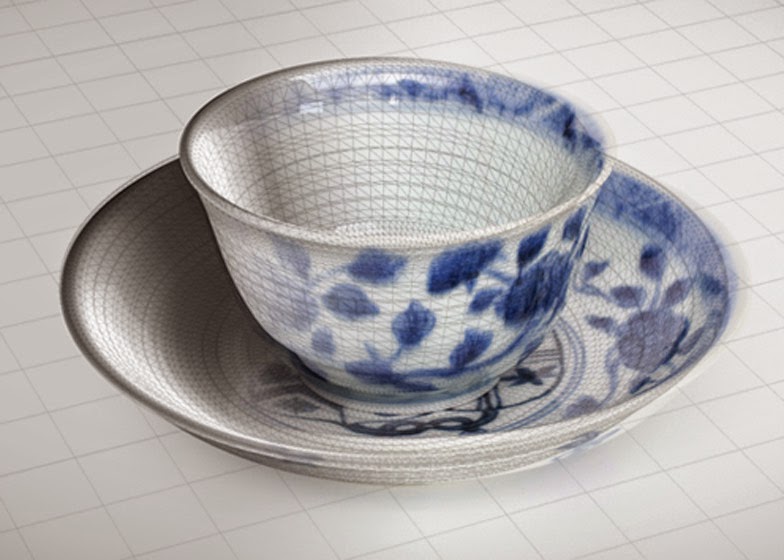 Some people, like Dutch art historian and designer Maaike Roozenburg, believe that displaying art so conservatively removes works from their daily functions, isolating the objects from the lives of visitors. Many believe that not being able to touch and interact with the objects on display limits visitors' ability to appreciate those works.
Some people, like Dutch art historian and designer Maaike Roozenburg, believe that displaying art so conservatively removes works from their daily functions, isolating the objects from the lives of visitors. Many believe that not being able to touch and interact with the objects on display limits visitors' ability to appreciate those works.In an effort to remove the distance between object and viewer, Roozenburg set out to create her Smart Replica project, with touchable 3D replicas of fragile teacups that caught her eye during a trip to the Museum Boijmans Van Beuningen in Rotterdam, Netherlands.
Roozenburg partnered with the Delft University of Technology to build 3D printing models of the objects. Because of the fragile nature of the teacups, Roozenburg and TU Delft used non-contact, medical CT scans, which the university students converted into 3D models.
Then, with the help of Wim van Eck of the Augmented Reality Lab of the Royal Academy of Art and the creative agency LikeFriends, Roozenburg added extra layers to the replicas. By using the smartphone or tablet app Junaio, museum visitors can use their devices to access the augmented reality layers of the objects they are touching.
The extra layers give the visitor access to the ornate design of the original object as well as information on the works.
Roozenburg is continuing the project with her partnering organizations to make more works accessible to viewers, and, with the growing use of 3D printing, we may see this trend applied to museums in the U.S. soon enough.
Sources: PSFK, Core77, Dezeen



2 comments:
Once we fully grasp the capabilities of 3-D printing, as a society, the sky's the limit to what we can create!
The world of modern art is becoming more sensual - you can touch it, hear it and communicate about it on-the-spot. I love the incorporation of art and technology - so many exciting possibilities.
Post a Comment